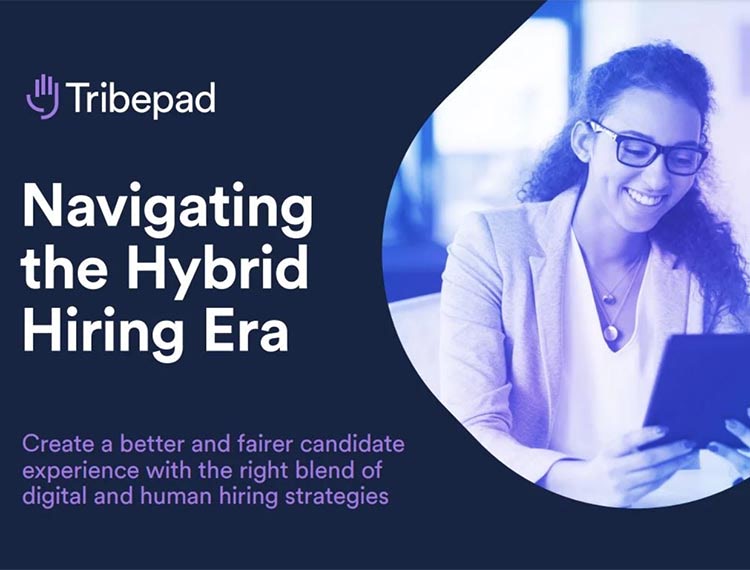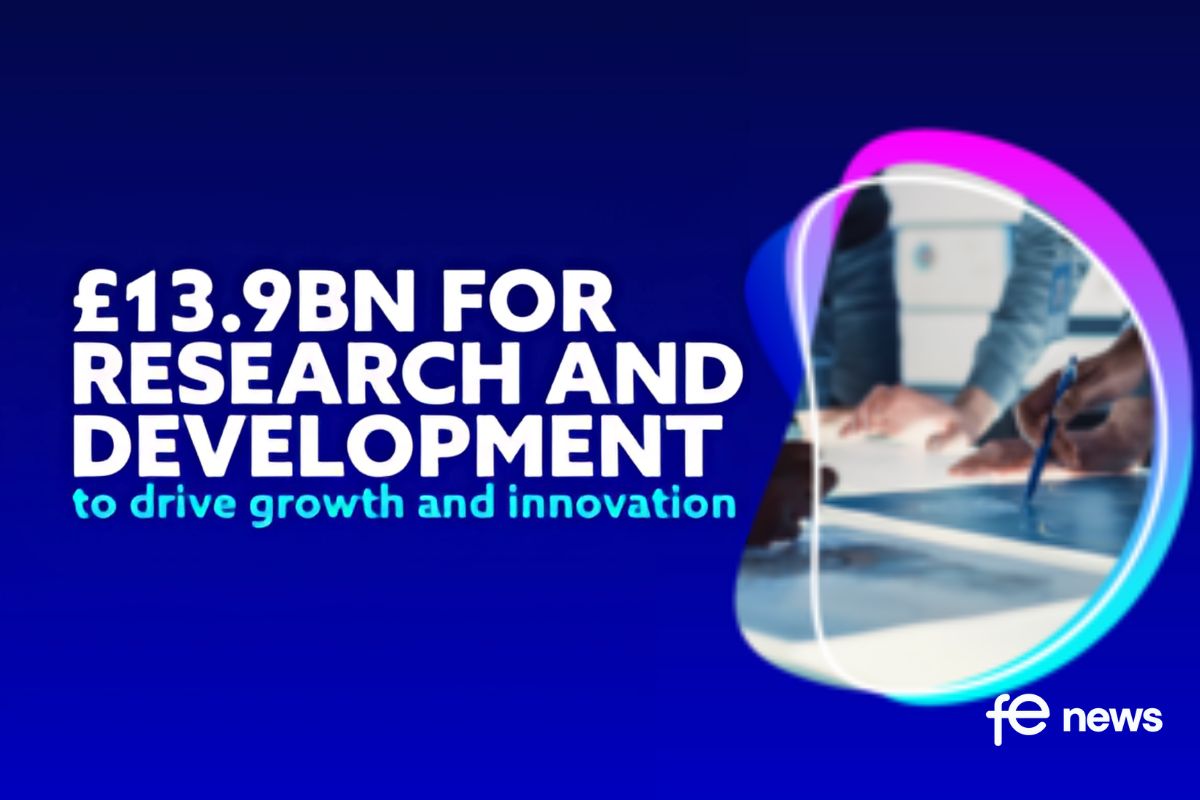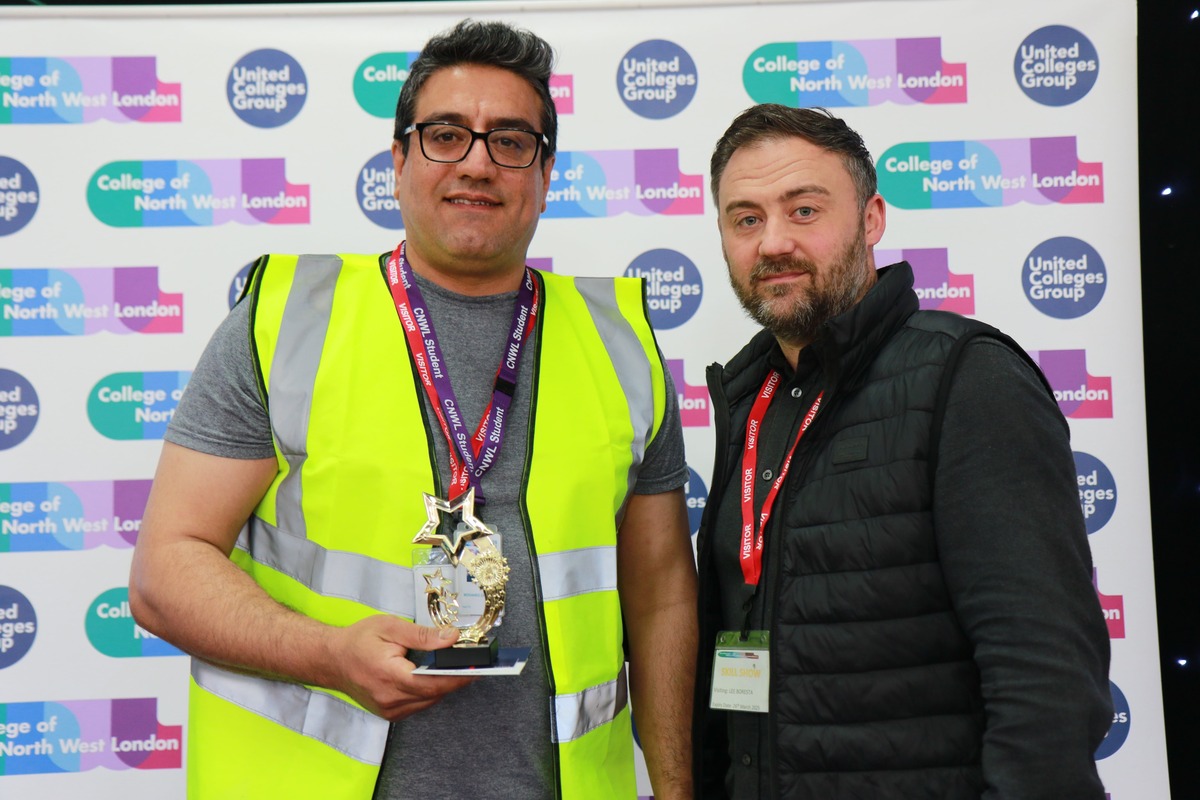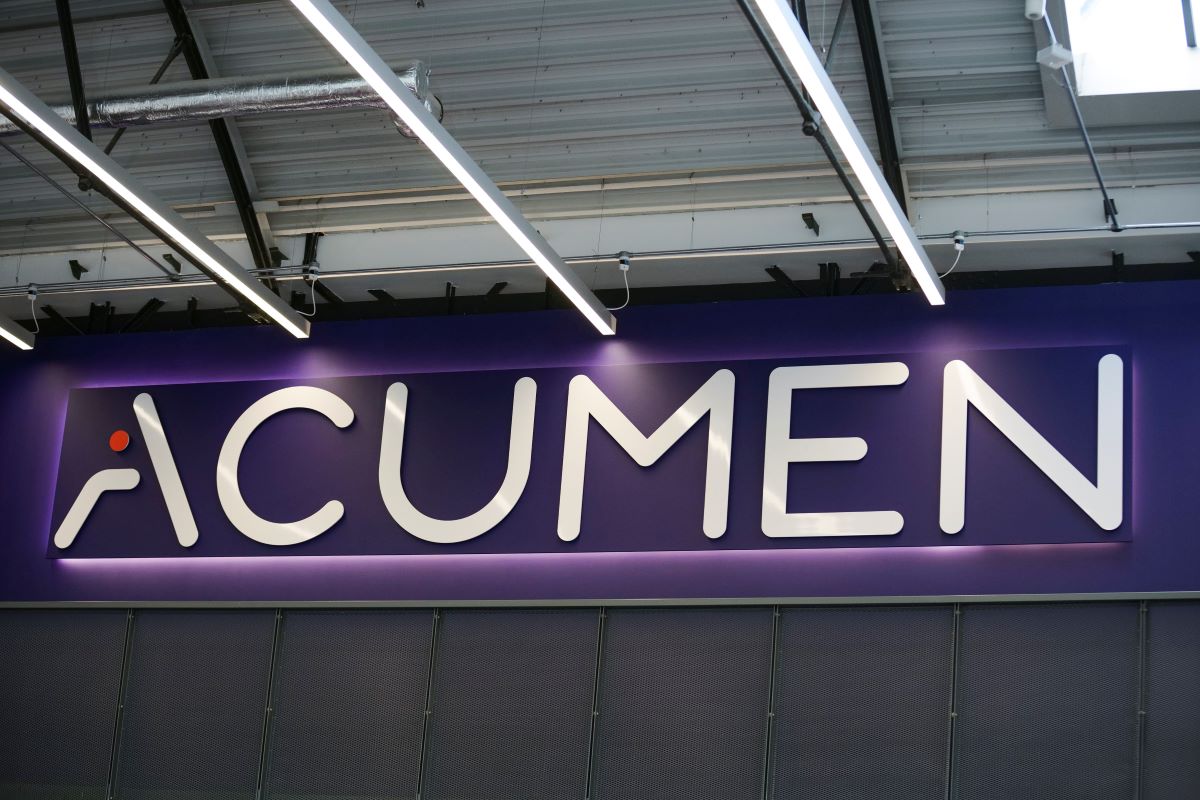The future of work is hybrid – and flexible

According to a recent @CMI_managers poll, flexible working has become the norm for some employees and with more than 80% of organisations implementing hybrid working and experiencing an improvement in productivity, it isn’t going away anytime soon.
Commenting on these findings, Rachel King, Director at Breathe, said:
“It’s not surprising the Chartered Institute of Management found over 80% of firms had adopted hybrid working since the pandemic. When managed effectively, which we’ve found at Breathe, hybrid working models can improve different levels of productivity; from heads down work eliminating distraction for deep learning, to heads up work for sparking creativity and inspiration between employees. This can have considerable benefits such as enhancing engagement, productivity levels, and leave room for employees to fit their work around their lifestyle.
“Having seen the fast evolution of office to home working, I encourage business leaders and HR directors alike to continue to be agile. Compromises can be met when it comes to re-introducing workers to the office to re-build cultural deficits, whilst also allowing employees to make their own decisions about the environment they’re best suited to.
“In light of the ‘Great Resignation’, people have been re-evaluating what is most important; from pay and mental health care, to culture and work-life balance. A top priority for leadership must be to boost overall wellbeing after another challenging year. Rather than re-enforcing rigid structures, I suggest listening to employees, enabling autonomy and comprise, to build a successful modern working environment.”
Cecilia Holmblad, Head of Marketing Relations at Winningtemp in response to the latest CMI findings.
“The latest study from Chartered Institute of Management suggests that employees are now accustomed to the ways of remote or hybrid working. And rather than showing resistance to this new form of work model, employers must now address the next set of workforce challenges and opportunities to successfully lead their teams. This includes renewed workforce planning, job restructuring and the establishment of ongoing employee engagement measures to build levels of trust and maintain levels of performance.
“Overall, whether you choose to go fully remote or hybrid, leaders must now focus on creating a great employee experience, especially to retain their best talent. This starts with asking what your employees want and taking their feelings about remote and in-person work into consideration. Then, employers or HR leaders can work with their teams to evaluate employee feedback in the context of business needs and develop a strategy that works for everyone involved.”
Navigating the Hybrid Hiring Era

New research shows how important it is to get the balance right between technology and the human touch
19th May 2021: New research into the job-seeking landscape in 2021 has revealed how, as hiring was digitised across all organisations in the UK due to the pandemic, the candidate experience has changed for the better.
Two-thirds of respondents (64%) believe video interviews have had a positive impact on the interview and hiring experience and two fifths (41%) think that companies who use automation in the recruitment process are making getting a job easier. Nearly half (48%) say video interviews and applications make them feel more confident and that they can present a better version of themselves.
The research was commissioned by leading HR-tech company Tribepad and is based on the opinions of 1,000 job-seekers as part of its Navigating the Hybrid Hiring Era report.
Growing understanding and positive experiences with HR-tech by candidates will come as welcome news for hiring teams and businesses, as industries witnessed a huge uptick in application volume as unemployment increased. Tribepad’s own data showed that overall annual application volume increased in sectors such as outsourcing, by 110%, public sector (93%) and property (63%). As a result, many organisations have implemented additional screening measures to cope with the additional work aided by automation.
The research revealed that many job-seekers can see the benefits of technology and automation, with half (49%) saying they experience a quicker application process, 43% noticing a quicker response time, and a third (35%) saying they value the more regular updates on the progress of their application.
Only 24% of respondents applied for jobs directly through a recruiter, showing how the role of the recruitment agency diminished. But recruitment teams can’t leave everything up to technology – while a third (32%) of candidates prefer to search for jobs online, without human interaction, 50% of job seekers still prefer human interaction when looking for a job, rather than doing it all online. Many of those said the process felt dehumanised (45%). The main barrier for this group was that automation bases its criteria on past facts, not future potential (49%).
Applicants also favoured contact with people, whether recruiters or hiring teams in-house, in face-to-face interviews (71%), on the phone (68%) or on a video (65%). At the other end of the scale, they were less important to the screening stage of the application experience. Automation was preferred in online tests (44%) and for right to work and criminal record checks, the preference between humans (43%) vs automation (33%) was much closer. (full details can be seen in attached graph)
Commenting on the report, Dean Sadler, founder and CEO of Tribepad said:
“The world has shifted in the last year, accelerating trends that were already on their way in. What’s clear is that recruitment can’t go back to the analogue era. Not now that applicants are used to practices that help them feel more confident, prepared and save them time.
“But it can’t be fully digital either. Job seekers still depend on human interaction to determine a lot about a company. For example, a company’s culture can give them a better sense of how comfortable they’d feel in that environment – something that can only fully be experienced in person. In-house recruiters and hiring teams benefit from these connections too, picking up on nuances like a candidate’s potential, presence and ambition.
“As we emerge into a post-pandemic world, hiring is on the increase. And recruitment teams need to be ready for the hybrid hiring environment; that means ensuring you have the right mix of tech and human input, so that you can create a candidate hiring experience that’s easy to use and hire the best people out there.”
Simon Pollen, Strategic Resourcing and Talent Acquisition Manager from Richmond and Wandsworth Council adds:
“While our onboarding is now automated via Tribepad and other innovations – like using video to market a vacancy – the human touch still remains key in establishing the sense of inclusivity for our organisation. It’s through this mix that the feedback we receive from every hire is hugely positive, with the biggest stand out being the personal attention and service received throughout the entire recruitment process. From guiding candidates through the anonymised application process right up to the point of checks and references.”
Hybrid working: now for the reality…
Chairing a CMI event bringing together a group of CMI Companions to discuss the issues surrounding blended working, Rachel Sandby-Thomas CMgr CCMI, registrar at the University of Warwick, said:
“I know I’m not the only one contemplating working in a hybrid way. We’ve had the ‘old normal’, with lots of presenteeism in the office; the ‘new normal’, with everyone working from home; and the ‘new-new normal’, which is going to be a mixture of the two.”
When the University of Warwick polled its employees, very few people wanted to be entirely remote or entirely on-site; a hybrid model, with elective days in the workplace, was the preferred approach. “But we then go into the divide of: who should choose where an employee works on a particular day?”
Who decides on what type of flexibility is on offer?
This discrepancy, between managers who want to choose what day their employees come in, and employees who want to make the choice for themselves, is a critical challenge.
Kathryn Austin CMgr CCMI, Chief People and Marketing officer at Pizza Hut, says mixed working practises will require careful navigation, but that we should not forget the lessons of the past year.
“The last year has proven that we can be incredibly productive working from home – so if a role can legitimately be fulfilled remotely and that is the preference of the individual, then why not support that working style as the new permanent norm?
“If we set hard company-wide policies based on old world paradigms, without listening and responding to individual needs we’ll lose talent who will choose an employer who is more flexible.”
Michael Winslow CMgr CCMI, a non-executive director, says that while we need to lead with empathy, ultimately the needs of the organisation trump the preferences of the employee. “If your business is highly focused on having people around to generate ideas and make things happen, that chemistry cannot be done as effectively over Zoom. Employees need to know what the goals of the business are – if that doesn’t align with their personal goals, then the business should try and find them something else to do. It’s clearly going to be a conflict and won’t end well unless it’s addressed.”
“But who should have the reins?” says Jose Lopes CMgr CCMI, head of business engagement for West Midlands Combined Authority. “Who should keep control? Is it HR, is it senior management – who has that ultimate say in how that organisation should be run?”
The wellbeing challenge
Robert Baker CMgr CCMI, who runs his own consulting firm Potentia Talent Consulting, commented:
“There was a lot of talk at the beginning of the pandemic about people burning out because they found it very difficult to switch off. Working from home was great, but if you were coming from the spare bedroom down to the dining room, you tended to overwork because there was no commute to give you “breathing space” – and there was the danger you would go back up the stairs after dinner and just continue working. There’s been a whole issue about how to switch off and how to have that separation, and I think employers need a value proposition for employees as we enter the ‘new-new normal’, with policies that take their wellbeing into account.
“It’s complex, because there’s also wellbeing issues around whether people want to be in the office and how they’re able to keep safe. If we put employees at the centre of this, how do we make sure they can cope with, and more importantly, thrive in whatever model we develop?”
Can flexibility break down dated barriers?
“In the past, the definition of a ‘good employee’ has been someone who is at work and available during certain hours and has a good attendance record,” says Edwina Dunn CMgr CCMI, founder of The Female Lead. “I think there’s always been a greater difficulty for women to conform to that pattern, particularly mid-career when they might have families or dependants who they’re responsible for.” While flexibility for working parents was becoming more standard across organisations, it did lead to some unexpected fallout. “They began to feel like second-class employees because they’re not present in the same way,” Edwina continues. “There is now an opportunity to reset that and not have just one model of what a ‘good employee’ looks like.”
Robert Baker says there’s been an unexpected positive for working fathers who have been spending more time with their children during the pandemic. Just as working mothers are now on a more even footing at work, working fathers are getting quality time with their children at home. The emergence of flexibility really does benefit everyone: it can enable more present parents and provide a better, more balanced role model to their children.
But will remote working create a new divide?
Thomas Lawson CMgr CCMI, chief executive of Turn2us, an organisation fighting financial inequality, expresses concern about a new ‘digital power divide’. Where once power and authority lay with those at the top of the chain of command making big decisions, is there now going to be a new divide between those who enjoy and engage with technology vs those who are reluctant or are even technologically illiterate? And what consequences does this have in terms of ageism and ableism? “There’s going to be a new divide in this new way of working, which will unfairly advantage and disadvantage different groups of people.”
Professor Karen Stanton CMgr CCMI, vice chancellor at Solent University, Southampton, believes that digital skills are fundamental for every organisation and employee. “We set out a project, called Our Ways of Working, which is intended to change the culture of the organisation and set a number of principles, like trust, empowerment, and [new ways of] measuring performance in this new, hybrid model.
“Our project is in three phases: we set out how we’re going to operate in the new academic year; our second phase is reviewing how our hybrid model is working; and then bed down the model that we really want to adopt. For us, a lot of this has to be dictated by what our students want. We clearly can’t have all of our staff sitting at home when we’ve got students who want to be on a campus. A campus breathes life, it is vibrant; so one of the challenges for us is to map onto what our staff and students want to do.”
And what about culture?
Thomas Lawson: “Someone once described me as suffering from the ‘tyranny of positivity’ – which wasn’t a compliment at the time! But about remote working I am much more concerned. The past year has been a period during which we have not been particularly well connected to each other; our meetings are incredibly functional, and even when we’ve tried to create that coffee chat they’ve felt inauthentic and a bit hokey. We’ve lost a lot of social capital.” The danger is that employees might lose trust in each other, and that there’ll be a negative impact on professional relationships.
Dr. Malraj Kiriella CMgr CCMI is a past president of CMI’s Sri Lanka board. He says that “countries like ours have learned a lot, as before this we weren’t very technologically savvy. Currently offices are closed because the Covid-19 infections are going up, so I’m lecturing from home.” He has concerns about how hybrid working will affect different sectors. “To be productive, you need to have the correct systems – but for sectors like tourism which have people-to-people processes, you need the people touch, not the machine touch.”
And we must consider the finances…
Elizabeth Haywood CMgr CCMI, who has a portfolio of non-executive roles, raises the issue of the personal financial costs of home working. If organisations decide on a hybrid model, whose shoulders do the costs of increased energy bills and setting up a home office fall on? “What’s the cost/benefit and where will the money for the additional costs come from? We’re still at fairly early stages in the whole discussion, but it’s got to be part of the mix.”
Rachel Sandby-Thomas agrees – and mentions that in terms of sustainability, there are positive implications from fewer commutes, but people are also using more electricity at home.
“One of the things we’re really conscious of is the impact [of Covid-19] on the city centre,” says Jose Lopes. “Our office space at the moment is in the centre of Birmingham, which has been severely impacted; it’s primarily professional services that are located there. We have for example, HSBC, Lloyds Bank, KPMG – and many are moving to some sort of hybrid model. The impact on the region – the restaurants and coffee shops, etc – is something that, as a regional authority, we’ve got to try and balance. The hybrid model has an implication from an economic perspective.”
What UK Managers think about WFH, flexible and hybrid working: the results are in
5th May 2021: CMI has been an advocate for flexible working practices for a long time. We believe it should be a day-one right that every employee has access to.
And senior leaders, listen up: your people agree.
For the past year, CMI partnered with WorkL to poll managers in the UK about their happiness, personal productivity and attitudes to work. Over this period, the results show that despite the stress of the pandemic, working from home has been a positive for the majority of managers.
In tandem, we’re seeing the rise of the four-day week, increased take-up of hybrid working models, and more flexible practices being incorporated into everyday working schedules.
The benefits of flexibility have been put through the rigorous stress test of mandatory home working due to Covid-19 – this unprecedented change has shown employers that virtual teams can still function well. Organisations have invested in their tech. Managers are trusting their teams to do their work. Employees are given autonomy and are learning new remote-working skills. There’s been lots of trial and error, but it’s clear that despite any teething issues, overall the change has brought about positives.
Now, as organisations look to return to on-site working, and with many already opening their doors for customers, it’s vital that we just default to ‘business as usual’. There are so many valuable lessons to be learned from the past year: communicating more; using collaboration tools; showing empathy and building trust; thinking outside of the box; trying new things and not letting the perfect be the enemy of the good.
The future is hybrid – and flexible
CMI is playing a central role in the ongoing debate about flexible and hybrid working (part-home, part on-site). We’re working closely with the government and organisations such as the Federation of Small Businesses, the TUC and Age UK – as part of the flexible working taskforce to help employers and employees adapt to new ways of working.
ONS recently released data on the changes to levels of home-working. Across a range of reward factors (wages, bonus, promotion), it shows that home workers have experienced greater equality due to Covid-19. The playing field is levelling between on-site and home workers. It will be interesting to see if this change remains as organisations start their ‘return to work’ phase.
CMI’s own research has found a strong demand for blending remote and onsite working: 93% of managers say it’s important for their employer to continue to offer a blended approach. The majority of managers (80%) are already working in a blended approach (where one and four days a week are onsite and the remaining are remote) and as we emerge from the pandemic, managers do not want homeworking to become a matter of the past – 61% said they ideally expect their staff to work in a blended fashion, showing a big takeup of the practice.
(Check out this superb guidance from Stephen Pierce CMgr CCMI on how to consult with employees to discover what they want.)
But we can’t rest on our laurels
Whilst managers responding to WorkL/CMIs happiness at work index have scored consistently high since April 2020 on their overall happiness at work (between 68%–72%), wellbeing scores should be heeded as a warning call to all.
Wellbeing has been the lowest scoring metric across the year: with low scores for both home- and office-workers. Indeed, wellbeing scores decreased between May 2020 and February 2021. Clearly, there are factors at play for employees in the UK that managers need to be aware of. Driving these low wellbeing scores, were lower scores in relation to feeling anxious or depressed at work. Those who reported that they were rarely anxious or depressed at work were likely to also be positive about getting the right support for their mental health and wellbeing at work during the Covid-19 pandemic.
While it may be easy to assume your staff are feeling fine and coping well, it is the responsibility of managers to check in with their teams and have meaningful interactions. Whether it’s starting a meeting by asking how they’re doing (and really meaning it) or checking in with them for a virtual coffee and catch-up, you need to make a habit of really asking if they’re doing okay.











Responses